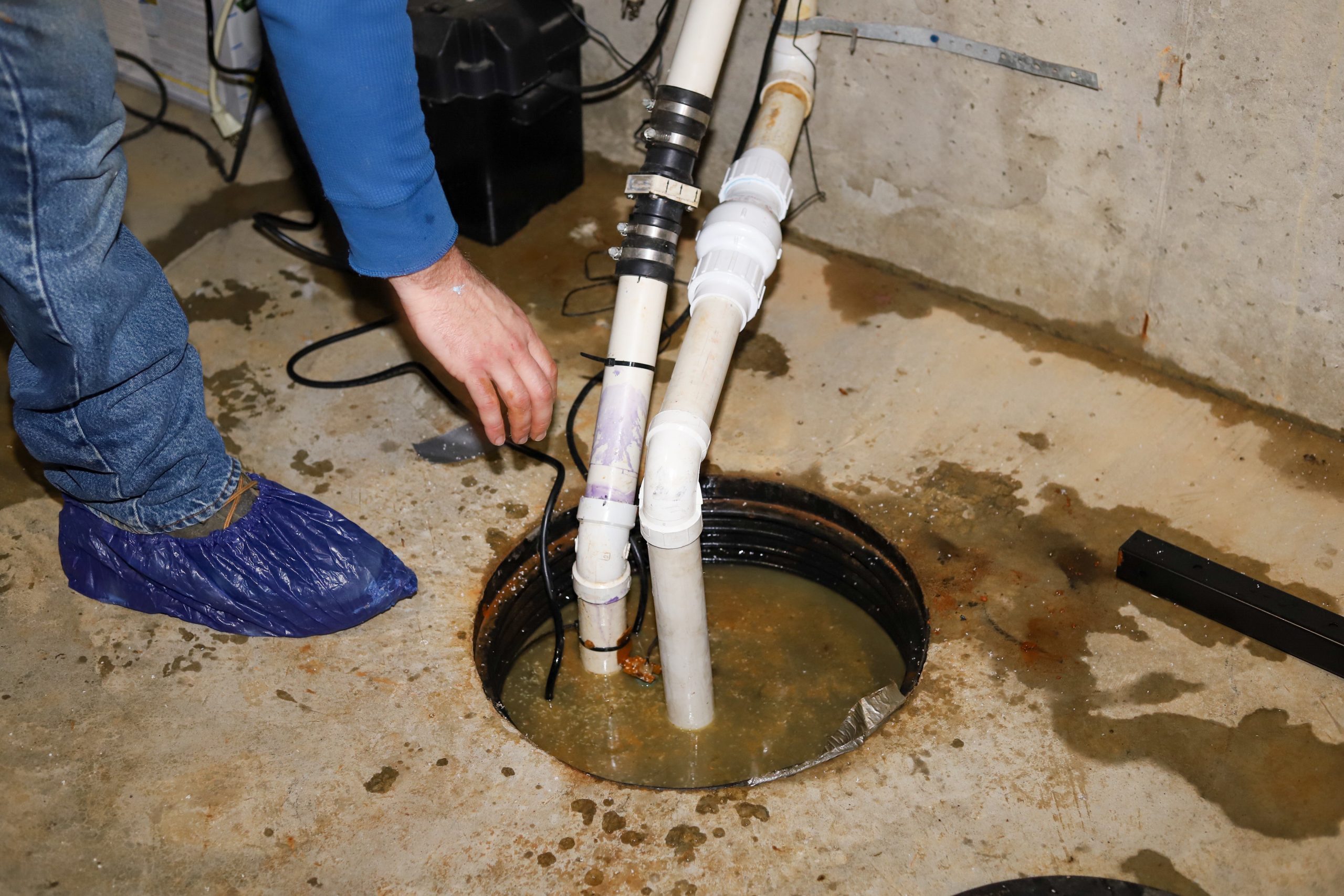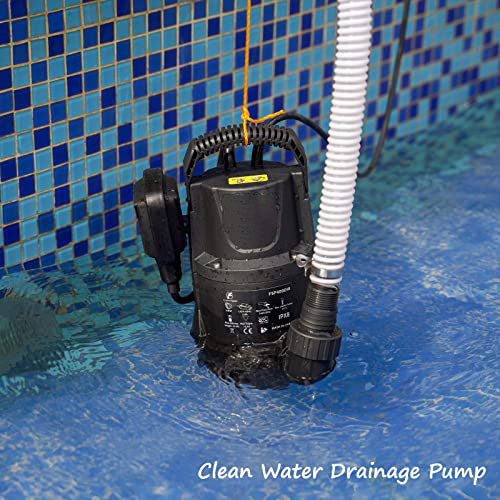Top Steps for Caring for Your Sump Pump
Top Steps for Caring for Your Sump Pump
Blog Article
They are making several good annotation related to Keep Your Sump Pump Clean, It'll Keep You Dry overall in this great article down the page.

Sump pumps are crucial elements in several homes, particularly in areas susceptible to flooding or too much dampness. They aid prevent water damages by efficiently removing excess water from basements or crawl spaces. Nonetheless, like any other home appliance, sump pumps call for regular upkeep to guarantee they work effectively when required one of the most. Cleaning your sump pump is a crucial part of its upkeep, and understanding how to do it correctly can conserve you from expensive repair work and possible calamities.
Intro
Keeping a tidy sump pump is important for its correct performance and long life. Disregarding this essential job can lead to obstructions, malfunctions, and eventually, water damage to your property. For that reason, discovering how to clean a sump pump is essential for property owners that rely upon these devices to keep their cellars dry and safeguarded.
Indicators of a Dirty Sump Pump
Recognizing when your sump pump requires cleansing is vital for protecting against possible malfunctions. Some typical indications that indicate a filthy sump pump include weird sounds during procedure, reduced water flow, and noticeable debris in the pit. If you see any one of these signs, it's important to cleanse your sump pump quickly to stay clear of any additional problems.
Preparing for Cleaning
Prior to you begin cleaning your sump pump, it's necessary to take some safety and security precautions. Start by shutting off the power to the pump to avoid any kind of electrical mishaps. Furthermore, put on ideal safety equipment, such as gloves and goggles, to protect on your own from dust, debris, and potential virus.
Understanding the Sump Pump
Before diving into the cleaning procedure, it's necessary to have a basic understanding of how a sump pump functions. Usually installed in a pit or basin below the basement flooring, a sump pump includes numerous crucial parts, consisting of a pump, a float switch, and a discharge pipeline. When water gathers in the pit, the float switch activates the pump, which then pumps the water out via the discharge pipeline, away from the structure's structure.
Detailed Overview to Cleaning Up a Sump Pump
Turning off the Power
Begin by separating the power supply to the sump pump to stop any crashes while cleaning.
Looking For Correct Performance
Before re-installing the pump, execute a fast examination to guarantee that the float button turns on the pump correctly. Pour some water into the sump pit and observe the pump's procedure. If every little thing is operating appropriately, you can reconstruct the pump and reconnect the power supply.
Eliminating Particles and Dirt
Make use of a bucket or an inside story to eliminate any visible particles, dirt, or sediment from the sump pit. Dispose of the debris effectively to avoid it from clogging the pump or the discharge pipe.
Cleaning up the Pump and Drift Switch
Once the pit is free from particles, thoroughly eliminate the pump from the pit. Evaluate the pump and the float button for any indicators of damage or wear. Make use of a soft brush or towel to cleanse the surfaces and remove any gathered grime.
Purging the System
After cleaning up the pump and float switch, purge the sump pit with tidy water to get rid of any kind of staying dust or debris. This will certainly assist make sure that the pump operates smoothly and successfully.
Upkeep Tips to Keep Your Sump Pump Clean
Along with periodic cleansing, there are a number of upkeep pointers you can comply with to keep your sump pump in ideal condition:
Final thought
Cleansing your sump pump is an essential element of its maintenance and guarantees that it runs effectively when you require it one of the most. By adhering to the actions described in this guide and incorporating routine upkeep into your routine, you can expand the life-span of your sump pump and safeguard your home from water damages.
6 STEPS ON HOW TO CLEAN A SUMP PUMP PROPERLY
UNDERSTANDING SUMP PUMPS
Your sump pump plays a crucial role in protecting your home by managing and removing excess water. It primarily functions as a “shield”, guarding your basement against the damaging effects of water accumulation. The pump is housed in a sump pit in the lowest part of your basement, and its job is to pump out any water that collects there.
During heavy rainfalls or when snow melts rapidly, water can infiltrate your basement, posing potential risks like flooding, structural damage, and harmful mold growth. Here, the sump pump springs into action, pumping out the intruding water and directing it away from your home.
SAFETY FIRST
Before cleaning, remember to prioritize safety. Disconnect the sump pump from the power source to prevent any accidental electric shocks. Also, wear sturdy gloves to protect your hands from any sharp or dirty components within the pump.
REMOVE THE SUMP PUMP
After ensuring your safety, the next step is to remove the sump pump from its pit. Doing this might require careful maneuvering as you don’t want to damage any pump components. Once removed, clean the sump pit to remove any accumulated debris or sludge.
INSPECT THE PUMP
Inspect the pump for any visible signs of wear or damage. Check the power cord, float switch, and impeller housing. If any components look worn out or damaged, consider replacing them to ensure optimal performance.
CLEAN THE PUMP
Thoroughly clean the pump with warm, soapy water. Make sure to rid it of any dirt, gravel, or other debris that might impede its performance. You can use a toothbrush to clean the small, hard-to-reach parts of the pump.
REINSTALL THE SUMP PUMP
Reinstall the pump into the sump pit Make sure it’s positioned correctly to remove the water effectively Once it’s back in place, reconnect it to the power source TEST THE PUMP
Finally, pour some water into the pit to ensure the pump works correctly. It should start automatically and begin pumping out the water; if it doesn’t, check the power source and the positioning of the pump.
Remember, while cleaning your sump pump is an essential part of home maintenance, hiring a professional plumber for a thorough inspection and cleaning at least once a year is also important. This will ensure that your pump is in optimal condition, ready to protect your home from potential water damage.
BEST PRACTICES FOR CLEANING SUMP PUMP DISCHARGE PIPES
Regular Inspection: Regularly inspect your discharge pipes, especially during heavy rainfall or snowmelt periods. Look for any signs of blockage or damage. Early detection of problems can prevent serious issues down the line. Periodic Cleaning: Over time, sediment and debris can accumulate in the discharge pipes, impeding the flow of water. Regular cleaning helps keep the pipes clear and functioning efficiently. You can use a high-pressure water jet to effectively clean the pipes. Insulation During Winter: In colder climates, discharge pipes can freeze, blocking the outflow of water. Protect your discharge pipes from freezing temperatures by insulating them with foam pipe insulation. This will ensure the sump pump can continue to discharge water even in freezing conditions. Proper Positioning: The discharge pipe should be positioned to direct water away from your home’s foundation. Improper positioning can lead to water seeping back into the basement. Ensure the pipe is long enough and angled correctly. Installation of a Check Valve: A check valve prevents water from flowing back into your sump pit after the pump has pushed it out. Installing a check valve helps maintain the efficiency of your sump pump and reduces the risk of flooding. Minimize Pipe Turns: Every curve or turn in the discharge pipe can decrease the efficiency of water flow. By minimizing turns and bends in your discharge pipe, you can increase the efficiency of your sump pump. https://www.fullspeedplumbing.com/how-to-clean-a-sump-pump-properly9999/

I came across that blog posting about Cleaning & Maintenance Tips for Your Home's Sump Pump while doing a lookup on the web. In case you appreciated our blog posting kindly don't forget to share it. Kudos for your time. Come back soon.
About This Report this page